Invasive Stiltgrass Update 8/25/2025
In the past two weeks, two more stilgrass infestations have been confirmed: one on private property in Walworth County and one on private property in Grant County. This underscores the importance of staying vigilant—there could be more populations going undetected. Keep searching your area and sending us photos of potential stiltgrass!
If you’ve spent any time in woods overrun by invasive plants, you know how damaging they can be to the health of the forest. Recently, a new invasive plant, Japanese stiltgrass, was spotted in Rock County—and now is the time to search near you to prevent it from spreading in the region.
Japanese stiltgrass (Microstegium vimineum) is a non-native annual grass that poses a significant threat to Wisconsin’s ecosystems. It grows in branching, sprawling mats in forests, streams, trails, ditches, and even lawns. In the eastern and southern US, including Illinois, it’s mwidespread and negatively impacting forests.
Extension is asking people in southern Wisconsin—especially Rock, Grant, Lafayette, Green, Walworth, and Kenosha Counties—to search your neighborhood and woodlands near you for stiltgrass and report it if you find it.
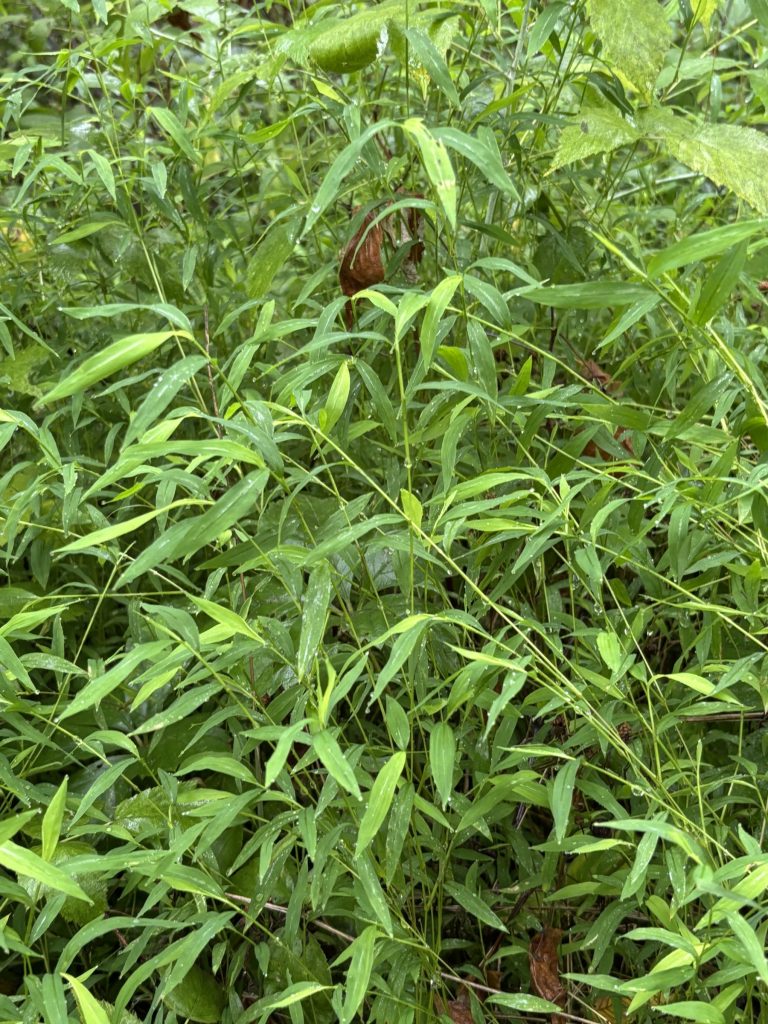
“This plant is quite harmful to our forests,” said Mark Renz, a professor and Extension weed specialist at UW–Madison. “It makes wildfires more frequent and severe, alters nutrient cycling and soil microbes, and reduces wildlife habitat, all of which decreases biodiversity.”
Until recently, it had only appeared in Wisconsin once, an isolated infestation in La Crosse County that was detected in 2020 (the DNR is working to eradicate this population). But last month, staff from the University of Illinois, UW–Madison, and the Wisconsin Department of Natural Resources found stiltgrass in a private woodland near Beloit in Rock County.
“It clearly has been at this site for many years, as it covers most of the property,” Renz said. “While it’s not clear how it was introduced to this site, I’m guessing it came from contaminated equipment or material from an infested forest to the south of us.” Renz’s team and the DNR are coordinating with the landowner on next steps for controlling the stiltgrass.
Here’s the good news: the infestation may not yet have spread beyond that single site. Initial surveys did not find it on adjacent landowners’ properties. To know for sure, that’s where you come in. UW-Madison Extension is asking people in southern Wisconsin—especially Rock, Grant, Lafayette, Green, Walworth, and Kenosha Counties—to search your neighborhood and woodlands near you for stiltgrass and report it if you find it. Early detection is crucial to help land stewards understand the scope of the problem and coordinate management strategies to protect our forests.
How to Identify Stiltgrass
Stiltgrass grows 0.5 to 3 feet in length, stretching horizontally along the ground or on other plants. It has a thin, weak root system and has rootlets (“stilt” roots) emerging from nodes along the lower sections of the stem.
The leaves are 2 to 4 inches long and ½ inch wide, have smooth edges leading to a point at both ends, and are spaced along the length of the stem. Look for a silvery off-center midrib line, which similar-looking native grasses do not have.
For detailed identification information and comparisons to lookalike species, explore this field guide (PDF) and watch this video.
What to Do If You Find Stiltgrass
- Take close-up photos of the grass as well as mid-range and zoomed-out photos that
show the landscape. - Write down the location, habitat, size, and density of the infestation.
- Contact one of these experts to help confirm identification.
- Extension Forestry: email forestry@extension.wisc.edu or call Working Lands
Forestry Educator Tony Johnson at 608-386-8900. - Wisconsin DNR: email invasive.species@wisconsin.gov.
- Extension Forestry: email forestry@extension.wisc.edu or call Working Lands
- They will help you come up with a control plan based on the site details and level of
infestation.
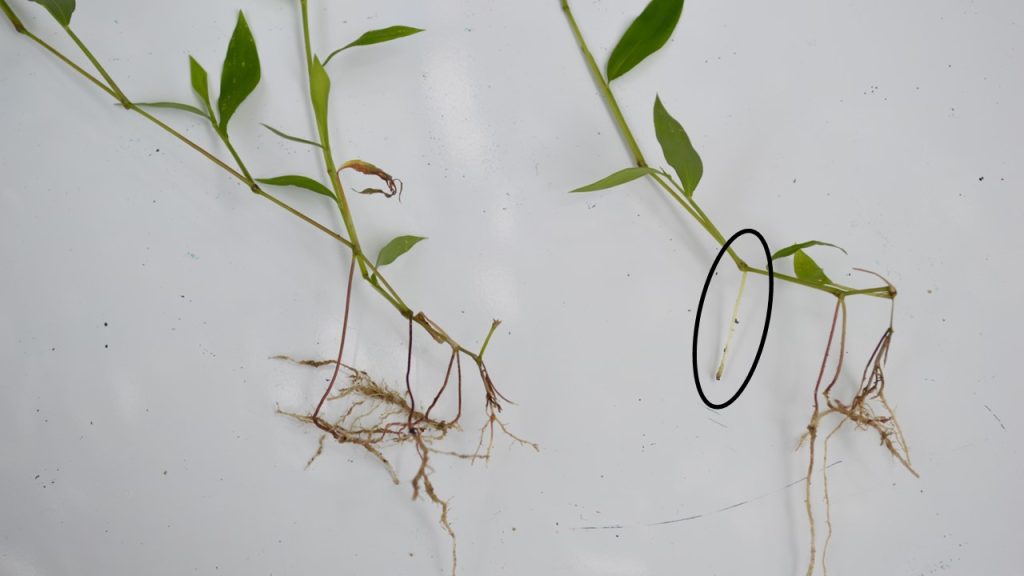
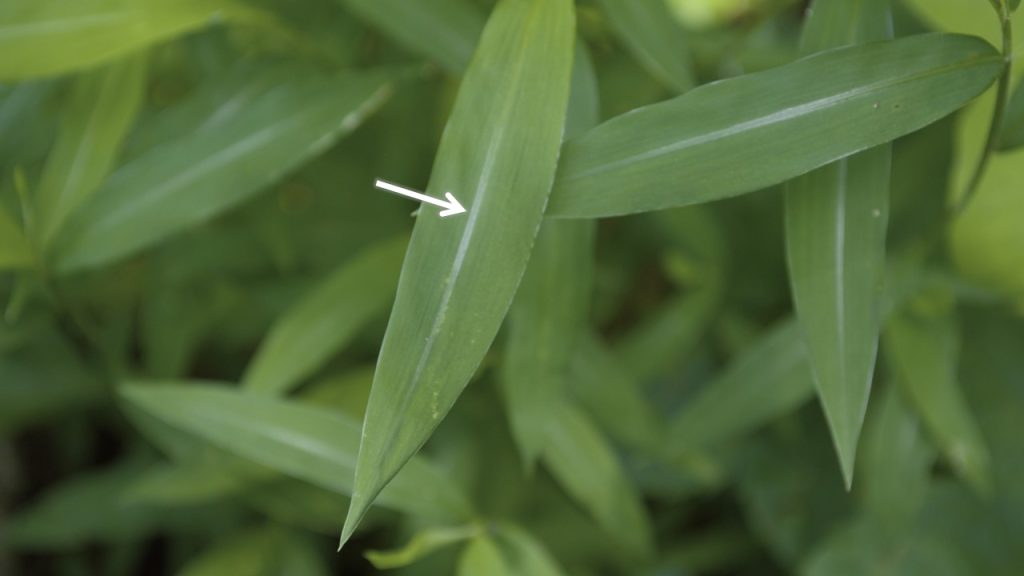
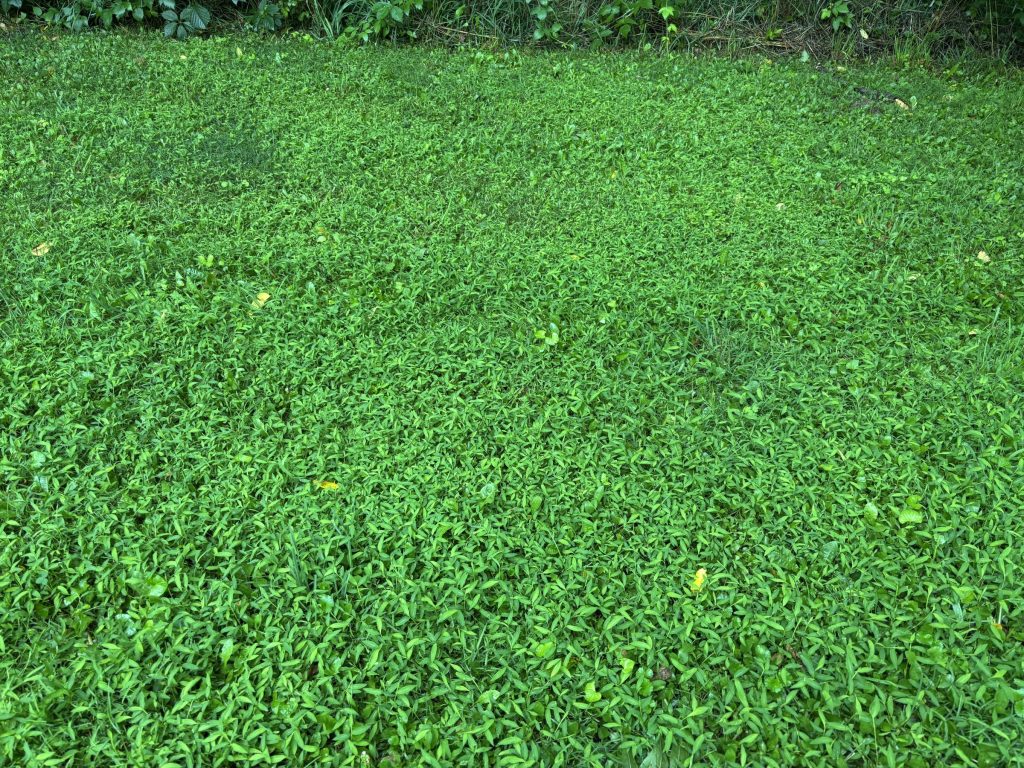
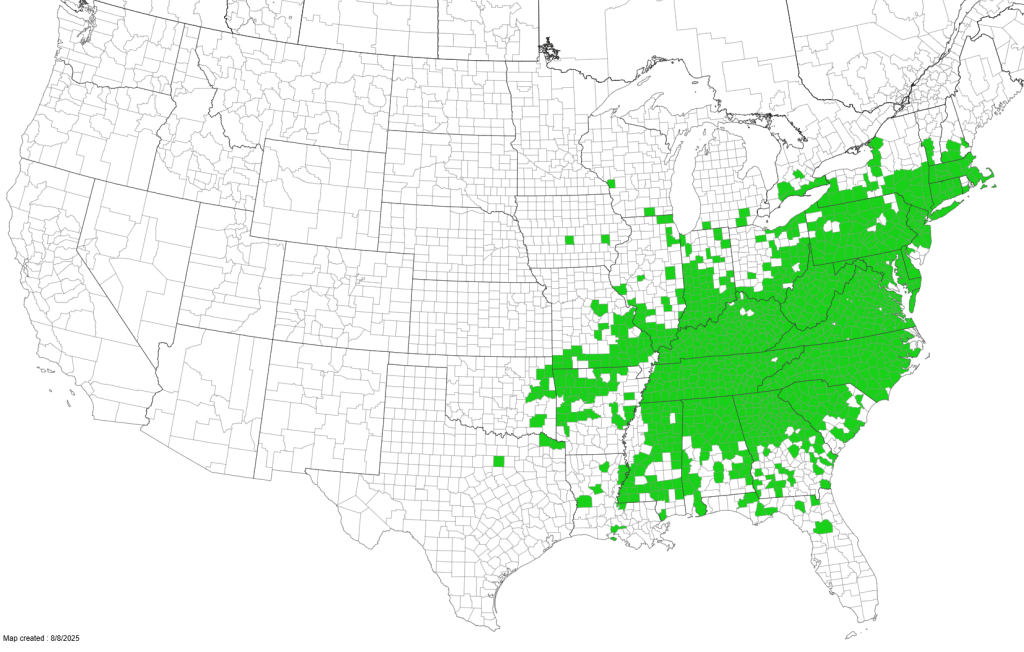
At our latitude, stiltgrass flowers in September, so if you get outside this month and find it, you’ll still have time to start control actions before it produces seed. This will save you additional effort in the future, since those seeds will become plants that need to be controlled in future years.
Even if you don’t find stiltgrass in your area this year, it’s important to remember how to identify and report it. Future infestations in Wisconsin are likely, and the sooner we find new stiltgrass populations, the easier it will be to protect our forests from them.
“In addition to monitoring, make sure to clean your boots, clothes, pets, vehicles, and equipment before traveling from one woods to another,” Renz said. “That way, you can do your part every day to slow the spread of invasive species.”
For interview requests, please contact:
- Mark Renz, UW–Madison Extension Weed Specialist and professor in the Department of
Plant and Agroecosystem Sciences, mrenz@wisc.edu - Tony Johnson, UW–Madison Extension Working Lands Forestry Educator,
anthony.johnson@wisc.edu




